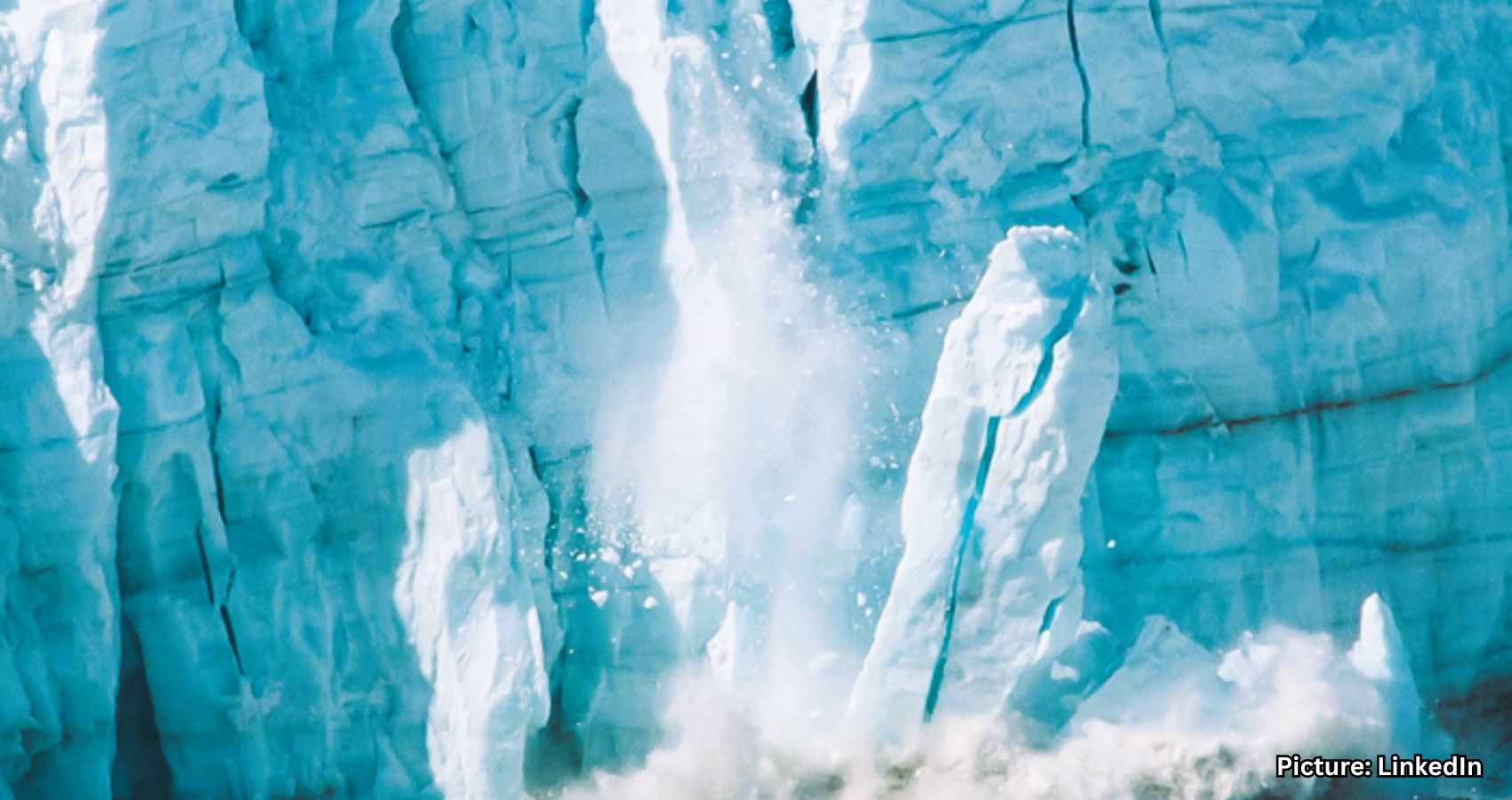A new international study has revealed that nearly 40 percent of the world’s existing glaciers are already at risk of disappearing, even if global temperatures were to stabilize at today’s levels. This stark assessment suggests that the world’s glaciers are far more vulnerable to climate change than previously believed.
Published in the journal Science, the research highlights that glaciers are more reactive to rising temperatures than earlier estimates had indicated. The findings raise serious concerns for regions dependent on glacier-fed water sources, as well as for global sea-level rise and long-term climate stability.
If the Earth continues on its current trajectory, with temperatures rising toward 2.7°C based on existing climate policies, more than 75 percent of the total glacier mass could be lost. This alarming projection underscores how critical it is to halt further global warming.
Dr. Harry Zekollari, a co-author of the study and Associate Professor at Vrije Universiteit in Brussels, emphasized the importance of even the smallest efforts to reduce warming. “Our study makes it painfully clear that every fraction of a degree matters,” he said. “The choices we make today will resonate for centuries, determining how much of our glaciers can be preserved.”
Glaciers have long been viewed as sensitive indicators of climate change, and their retreat has helped scientists track global warming trends. However, Dr. Lilian Schuster, co-lead author of the research, warned that the real situation is far worse than what is currently visible. “But the situation for glaciers is actually far worse than visible in the mountains today,” she noted.
One key finding is that smaller glaciers, especially those most critical to local human communities, are disproportionately affected. The presence of massive ice sheets in Antarctica and Greenland tends to obscure the vulnerability of these smaller glaciers in global analyses. But the study found that some of the world’s most important glacier regions are nearing critical thresholds.
In regions like the European Alps, the Rocky Mountains in the western U.S. and Canada, and Iceland, the impact of a 2°C rise in temperature could be devastating. At that level, these areas could lose between 85 and 90 percent of their glacier ice compared to 2020 levels. Scandinavia’s glaciers are even more fragile, with predictions indicating that glacier ice there may disappear entirely at 2°C warming.
The consequences are especially troubling for the Hindu Kush Himalaya region, where glaciers feed major rivers relied on by around 2 billion people. If temperatures rise by 2°C, this region could see a 75 percent reduction in glacier ice compared to 2020. That would have major repercussions for water supply, agriculture, and regional ecosystems.
However, there is still some hope. If global temperature rise is kept within the Paris Agreement target of 1.5°C, many glaciers could be partially preserved. In this more optimistic scenario, even Scandinavia would retain 20 to 30 percent of its glacier ice, while regions like the Himalayas and the Caucasus might retain as much as 40 to 45 percent. This demonstrates the importance of pursuing aggressive decarbonization strategies and highlights how critical it is to remain within the 1.5°C target.
“This report reiterates the growing urgency of the 1.5°C temperature goal and rapid decarbonization to achieve it,” the researchers emphasized in their publication.
The conclusions are based on a detailed modeling effort led by 21 scientists from 10 different countries. The team used eight glacier models to simulate future ice loss for over 200,000 glaciers around the world. For each modeled scenario, they assumed that global temperatures would remain stable for thousands of years, providing a clear picture of how today’s decisions could echo far into the future.
Their findings show that glaciers will continue to shrink quickly over the next few decades, even in the absence of additional warming. This is because glaciers take a long time to adjust to new temperature conditions. As a result, even without further increases in global temperature, glaciers will keep retreating for centuries, moving to higher altitudes and establishing new, smaller equilibrium states.
Interestingly, glaciers in tropical regions may fare slightly better in terms of retaining ice, but not for hopeful reasons. The central Andes in countries like Peru, Ecuador, and Colombia, as well as glacier regions in East Africa and Indonesia, are expected to retain more ice simply because they have already lost most of it.
Some recent examples illustrate how fast this process is occurring. Venezuela’s last glacier, Humboldt, lost its official glacier status in 2024. In Indonesia, the ironically named “Infinity Glacier” is also expected to vanish within the next two years. Similarly, Germany saw one of its last five glaciers disappear during a 2022 heatwave, and Slovenia is believed to have lost its final actual glacier decades ago.
These examples reflect a broader pattern of irreversible loss. Once glaciers shrink past a certain threshold, they can no longer maintain their mass balance, and their decline accelerates. In many parts of the world, this means that future generations will grow up without ever seeing the ice that once defined their landscapes.
Despite the grim projections, the study’s authors remain hopeful that swift and meaningful action can still change the outcome. “The decisions made by political leaders and societies today will define the fate of glaciers for generations to come,” the team wrote.
Their message is clear: the fate of glaciers is not entirely sealed, but time is running out. With the climate crisis intensifying, each fraction of a degree of warming avoided could mean the difference between preserving a vital water source and watching it disappear.
While the situation for glaciers is dire, it is not hopeless. The study provides a compelling call to action for policymakers, industries, and individuals alike to pursue immediate and sustained reductions in greenhouse gas emissions. The science has spoken — now it is a matter of will and urgency.

